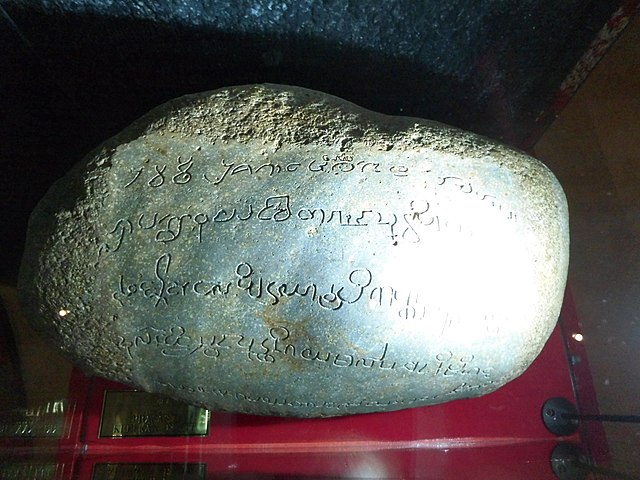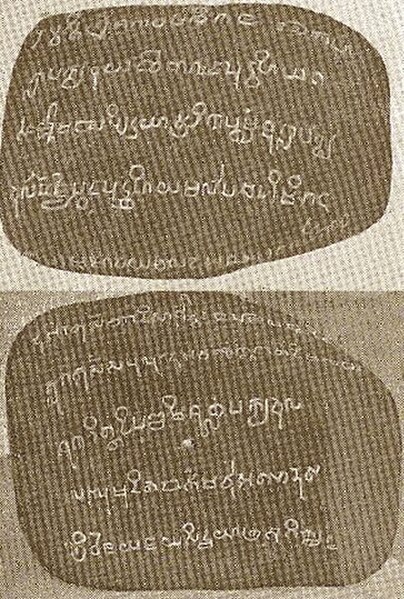Kedukan Bukit inscription
The Kedukan Bukit inscription is an inscription discovered by the Dutchman C.J. Batenburg on 29 November 1920 at Kedukan Bukit, South Sumatra, Dutch East Indies, on the banks of Tatang River, a tributary of Musi River. It is the oldest surviving specimen of the Malay language, in a form known as Old Malay. It is a small stone of 45 cm × 80 cm. This inscription is dated 1 May 683 CE. This inscription was written in Pallava script.
The inscription displayed in the National Museum of Indonesia.
Malay is an Austronesian language that is an official language of Brunei, Indonesia, Malaysia, and Singapore, and that is also spoken in East Timor and parts of Thailand. Altogether, it is spoken by 290 million people across Maritime Southeast Asia.
The Rencong alphabet, a native writing system found in central and South Sumatra. The text reads (Voorhoeve's spelling): "haku manangis ma / njaru ka'u ka'u di / saru tijada da / tang [hitu hadik sa]", which is translated by Voorhoeve as: "I am weeping, calling you; though called, you do not come" (hitu adik sa- is the rest of 4th line.
Kedukan Bukit Inscription, using Pallava alphabet, is the oldest surviving specimen of the Old Malay language in South Sumatra, Indonesia.
Final pages of the Taj al-Salatin, The Crown of Kings, a Malay "mirror for princes", copied by Muhammad bin Umar Syaikh Farid on 31 July 1824 CE in Penang in Jawi script. British Library
A Malay traffic sign in Malaysia.





